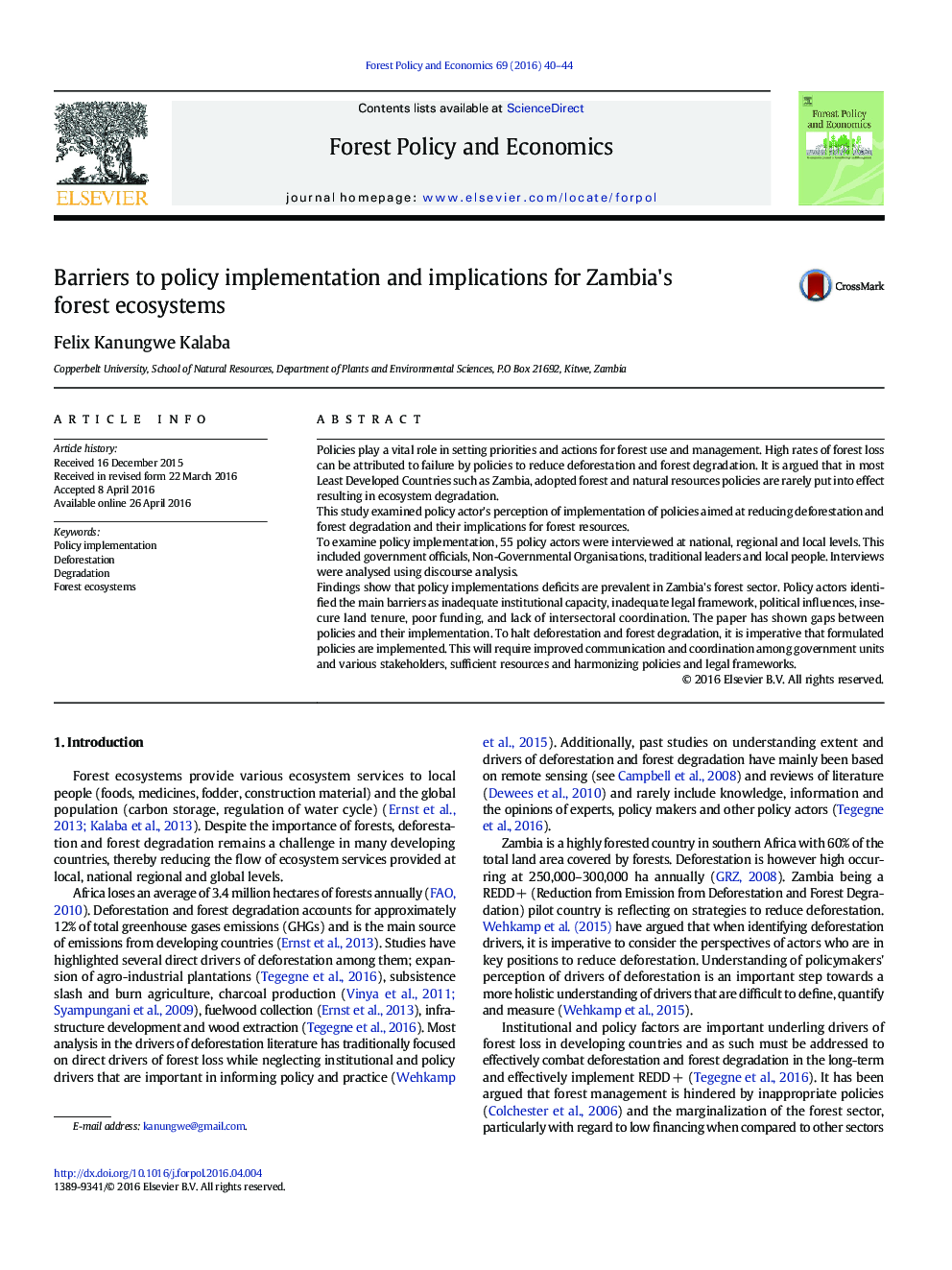| کد مقاله | کد نشریه | سال انتشار | مقاله انگلیسی | نسخه تمام متن |
|---|---|---|---|---|
| 91239 | 159773 | 2016 | 5 صفحه PDF | دانلود رایگان |
• The paper shows the various causes of weak levels of policy implementation
• Governments fail to prevent deforestation due to weak policy implementation
• Policy implementation is weak in Zambia's forest sector
• Inadequate institutional capacity and legal framework is hampering policy implementation
• Policy implementation is affected by lack of intersectoral coordination among stakeholders
Policies play a vital role in setting priorities and actions for forest use and management. High rates of forest loss can be attributed to failure by policies to reduce deforestation and forest degradation. It is argued that in most Least Developed Countries such as Zambia, adopted forest and natural resources policies are rarely put into effect resulting in ecosystem degradation.This study examined policy actor's perception of implementation of policies aimed at reducing deforestation and forest degradation and their implications for forest resources.To examine policy implementation, 55 policy actors were interviewed at national, regional and local levels. This included government officials, Non-Governmental Organisations, traditional leaders and local people. Interviews were analysed using discourse analysis.Findings show that policy implementations deficits are prevalent in Zambia's forest sector. Policy actors identified the main barriers as inadequate institutional capacity, inadequate legal framework, political influences, insecure land tenure, poor funding, and lack of intersectoral coordination. The paper has shown gaps between policies and their implementation. To halt deforestation and forest degradation, it is imperative that formulated policies are implemented. This will require improved communication and coordination among government units and various stakeholders, sufficient resources and harmonizing policies and legal frameworks.
Journal: Forest Policy and Economics - Volume 69, August 2016, Pages 40–44
